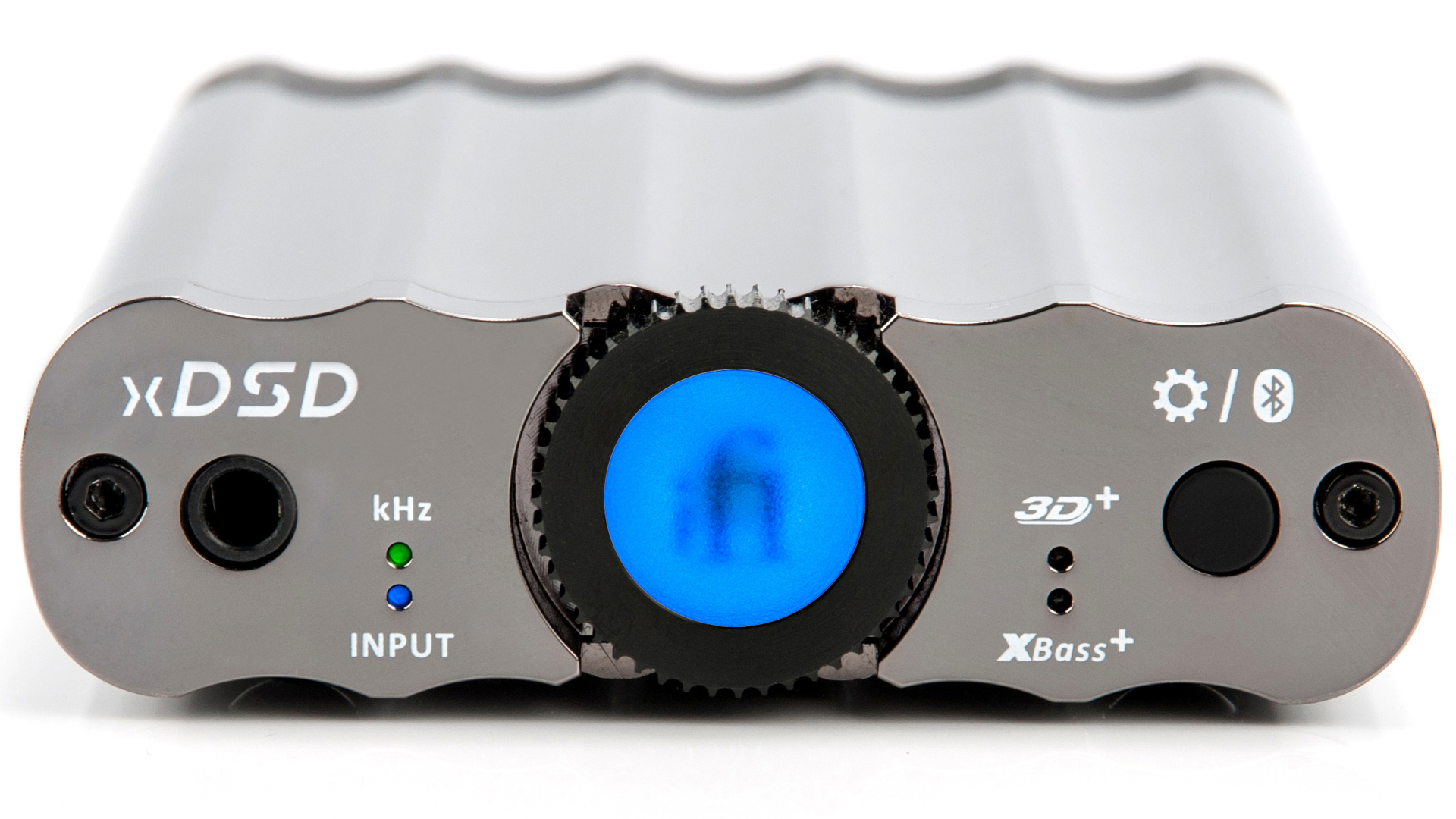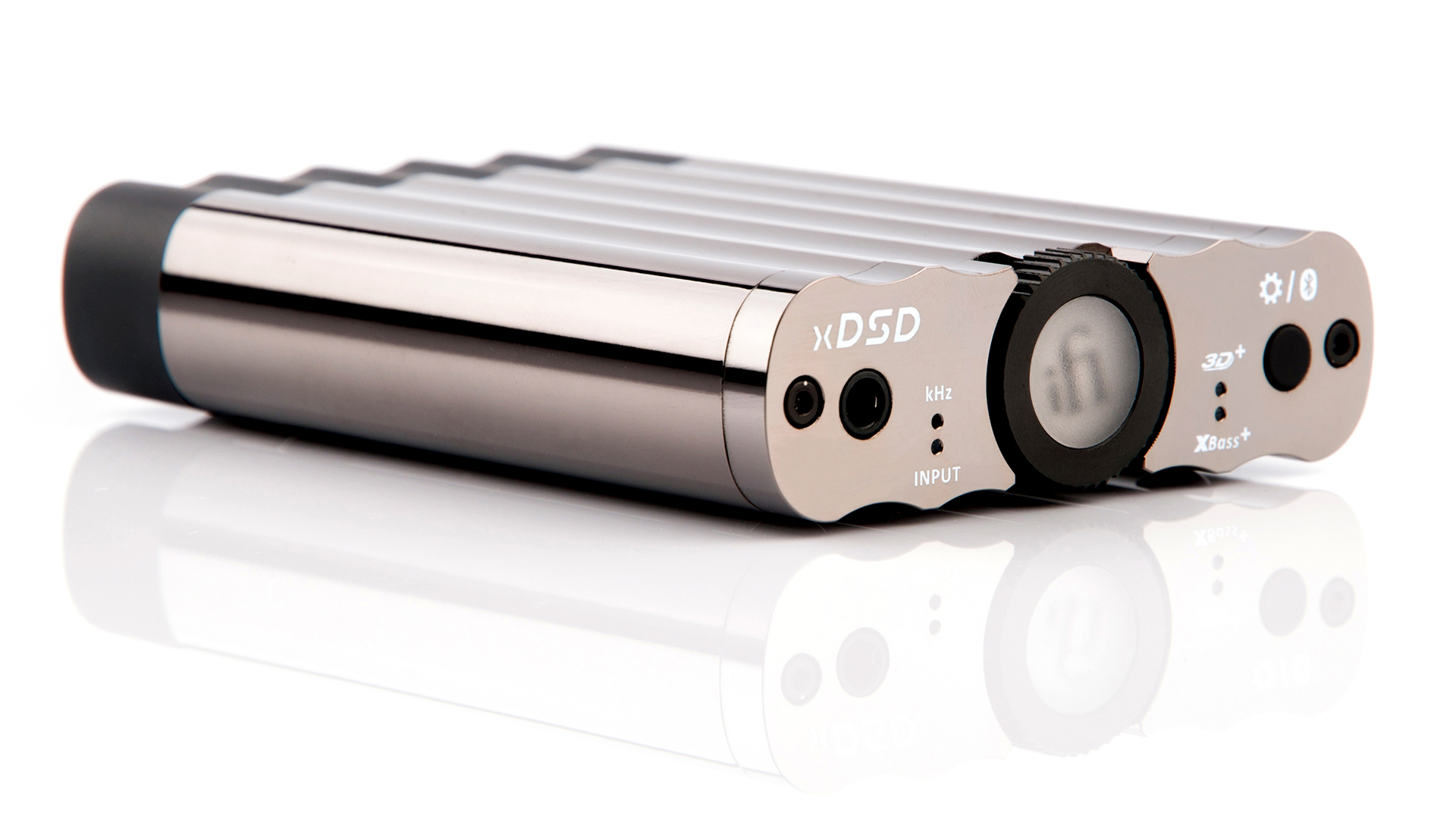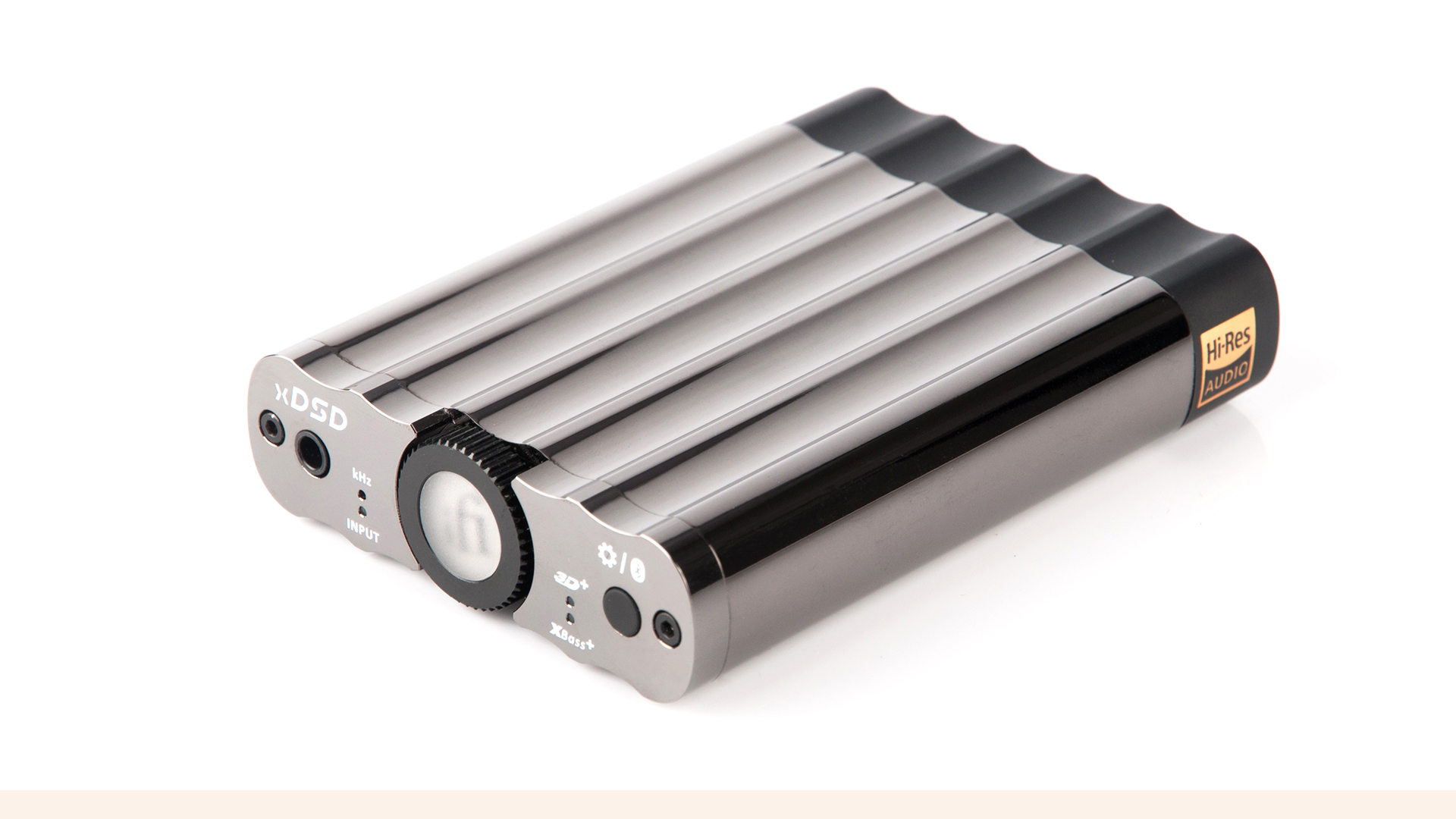What Hi-Fi? Verdict
The iFi xDSD has everything a portable DAC should have, but its sound isn’t class leading
Pros
- +
Vast file support
- +
Decent battery life
- +
Clean, well-balanced sound
Cons
- -
Needs greater rhythmic precision
- -
Lacks class-leading insight
Why you can trust What Hi-Fi?
While many of the digital-to-analogue converters we encounter are those inside digital hi-fi systems and components, they also exist in standalone form with rechargeable built-in batteries and a design that’s easy to carry around.
Such portable DACs can be used to enhance smartphone sound when you’re out and about, or boost your laptop’s performance away from a mains outlet. Some can even be quickly and conveniently swapped into a hi-fi set-up to perform DAC duties there.
iFi has a number of such devices in its arsenal. Its latest is the xDSD, but portability is just one of the multiple selling points.
The xDSD’s file support goes beyond what most will need. Via its USB input, it can play PCM files up to 768kHz, and support for DSD goes all the way up to DSD512. Through its 3.5mm coaxial/optical combination input, the ceiling is 192kHz. And there’s also aptX Bluetooth for wirelessly sending music to the xDSD from a smartphone or laptop.
Build

The xDSD is about the size of a pack of cards, and with its ridged chassis it resembles a sort of pocket-sized, electronic güiro. But while it’s tempting to run your fingers over that surface, that temptation is curbed by a metallic finish that is easily plastered with finger marks. Credit to iFi for making its DAC look interesting, but it’s not exactly a practical aesthetic.
The xDSD’s build is exactly what you’d expect of a portable DAC at this price, though: well made, compact and unfussy. Resist the temptation to fondle it and the iFi looks pretty neat.
Features

The space between a laptop and pair of headphones isn’t the xDSD’s only natural habitat. It can also work in a system between a source and amplification thanks to the front-panel 3.5mm headphone jack doubling up as a fixed (2V) line-level output. And anyone inclined to use the xDSD to boost their smartphone's performance can do so using Bluetooth or via a Lightning-to-USB (for Apple) or USB OTG (for Android) adapter, neither of which is included.
The latest hi-fi, home cinema and tech news, reviews, buying advice and deals, direct to your inbox.
In the box is a USB-to-USB Type B dongle, as well as an optical-to-3.5mm adapter that fits into the rear combined coax/optical input – the only other physical input apart from USB. The micro-USB on the back panel isn’t a third connection, it’s simply there for charging purposes.
The xDSD can be permanently plugged in for continuous use, but for portable use (or simply to cut down on wires) there’s also a built-in rechargeable 2200mAh battery that iFi claims delivers six to eight hours of playback from a single charge (we clocked six hours in testing at a fairly high volume).

Bluetooth Yes
USB input Yes
Coax/optical input Yes
Battery life 6-8 hours
Outputs Line-level, headphone
Weight 127g
Below the micro-USB socket is a small LED that indicates battery level – it goes red to show less than a quarter full, for example. Like the Chord Mojo, the xDSD makes up for its lack of text display with various colour indicators for file type and size, volume, input source and Bluetooth pairing.
The centre of the rotary volume dial lights up in different colours depending on volume, although its functionality is more diverse. Depending on how long you press it down, it can be used to power on/off, select sources or to mute.
The small ‘input’ LED next to the dial displays current source selection by changing colour to white for USB, green for coaxial/optical, blue for Bluetooth, or blue/red for Bluetooth pairing mode. The equally small ‘kHz’ LED indicates the type of file that is currently playing.
The rest of the busy front panel is taken up by a ‘settings’ button that when pressed cycles between 3D+, Xbass+ and 3D+/Xbass+ modes, and when held activates Bluetooth pairing. It also configures the 3.5mm output for headphone or line-level use – for the latter, hold down the settings button, press the rotary dial to turn the device on, and then keep your finger on settings for three seconds.
The 3D+ and Xbass+ modes help create a more immersive soundstage and more prominent bass. There is also a switch at the rear to flick between ‘measure’ and ‘listen’ digital filters – the latter is our sonic preference.
Sound

We’ve reviewed enough iFi DACs to expect a clean, refined and tonally balanced performance from the xDSD, and there are few surprises in that respect.
Its instantly accessible delivery makes every song in our multi-genre playlist enjoyable. As we play Darius’s Colourblind, the xDSD laps up the glossy, over-produced presentation; the densely-populated midrange is open and detailed, and the trebly synth sparkles with a measured enthusiasm.
Not only even-handed from head to toe but also comfortably spacious and reasonably well organised, the iFi is the DAC embodiment of a Sunday afternoon spent listening to your favourite band.
LCD Soundsystem’s pulse (v.1) is a synth sonata that relies on a wide, organised canvas and a revealing midrange, and the xDSD keeps everything well tracked and interesting throughout the 13-minute duration.
In a system environment, connected to a stereo amplifier via a 3.5mm-to-RCA cable, the iFi demonstrates a similar character – it’s radiantly clean, organised and articulate – and it offers a significant improvement on the quality achievable when plugging headphones directly into the socket of an average laptop (we use Macbook Airs and Pros).
But the xDSD could be better. Considering the generally consistent sonic character of iFi’s DAC range, it’s perhaps not surprising that the xDSD shares the same weakness in rhythmic precision as the company’s flagship Pro iDSD.
With The National’s Bloodbuzz Ohio, the drive behind the signature drum pattern is a little off, as is the coordination between it and the sideline cymbals and dripping piano line. Play Rival Consoles’ Phantom Grip and the instrumental’s complex cadence is coherent but not crystalline. It’s a mishap that is only exaggerated when you compare it with the class-leading Chord Mojo’s precise rendition.
Playing Thom Yorke’s Suspirium, there’s fluidity, clarity and distinct ends to the piano notes playing through the xDSD. Yorke’s haunting vocal has the transparency to transport you to the eerie atmosphere of the horror film the song scores, too.
But the Mojo’s interpretation is more fluid, with greater dynamic attention on the burden on each piano stroke, and tighter timing between the notes. The Chord’s extra midrange warmth and insight also ensures that vocal is a bit more evocative.
Verdict
The iFi xDSD isn’t the first portable DAC to come up against the Chord Mojo and fall short of its brilliance, and it probably won’t be the last. But its own triumphs – vast file support, portability and a generally agreeable sound – make it a commendable DAC at this price point, whichever way you use it.
As a portable sound-boosting solution, the iFi xDSD makes a lot of sense, even if there is a better-sounding alternative out there.
SCORES
- Sound 4
- Features 5
- Build 4
MORE:
Read our Chord Mojo review
What Hi-Fi?, founded in 1976, is the world's leading independent guide to buying and owning hi-fi and home entertainment products. Our comprehensive tests help you buy the very best for your money, with our advice sections giving you step-by-step information on how to get even more from your music and movies. Everything is tested by our dedicated team of in-house reviewers in our custom-built test rooms in London, Reading and Bath. Our coveted five-star rating and Awards are recognised all over the world as the ultimate seal of approval, so you can buy with absolute confidence.


